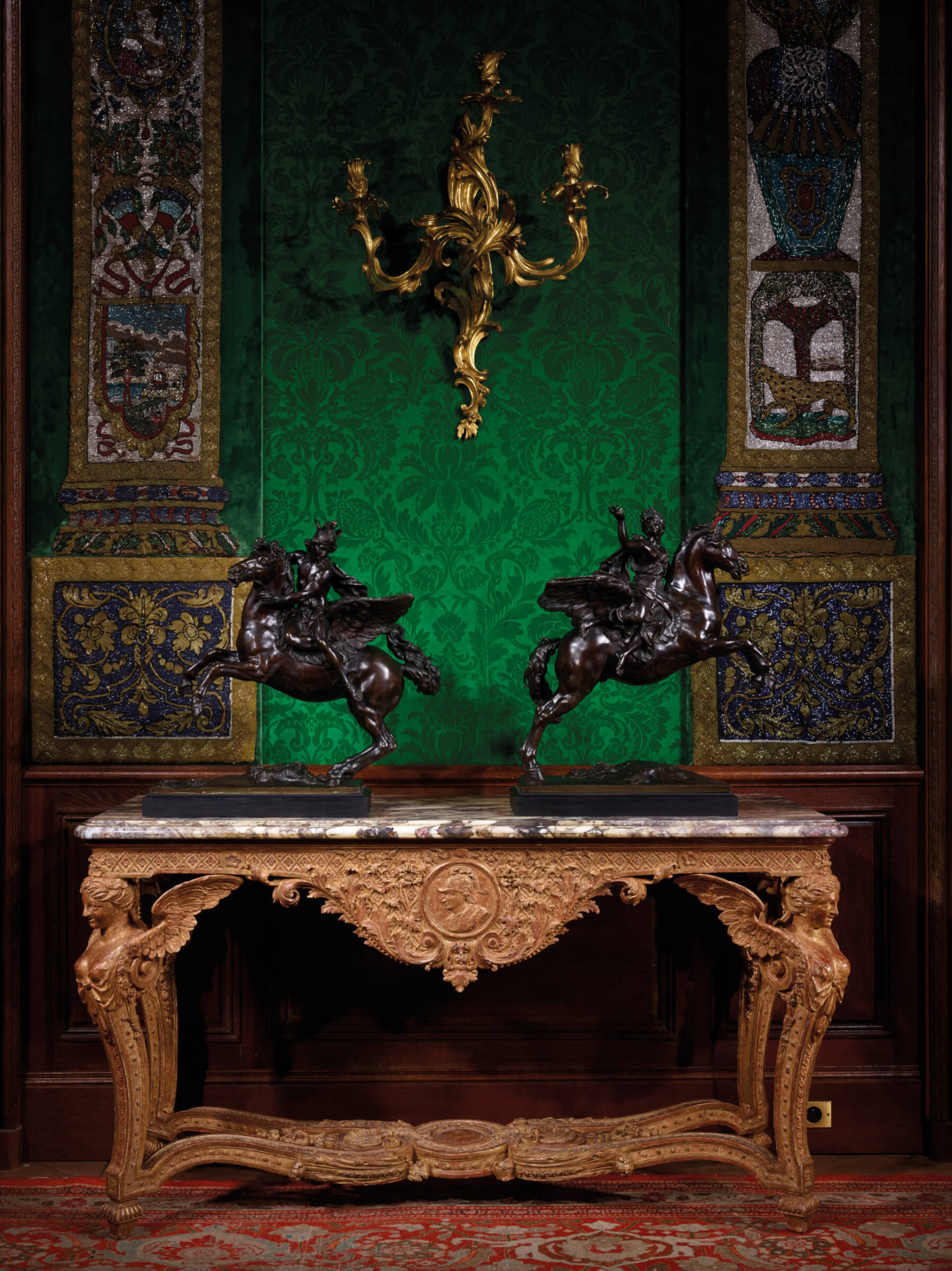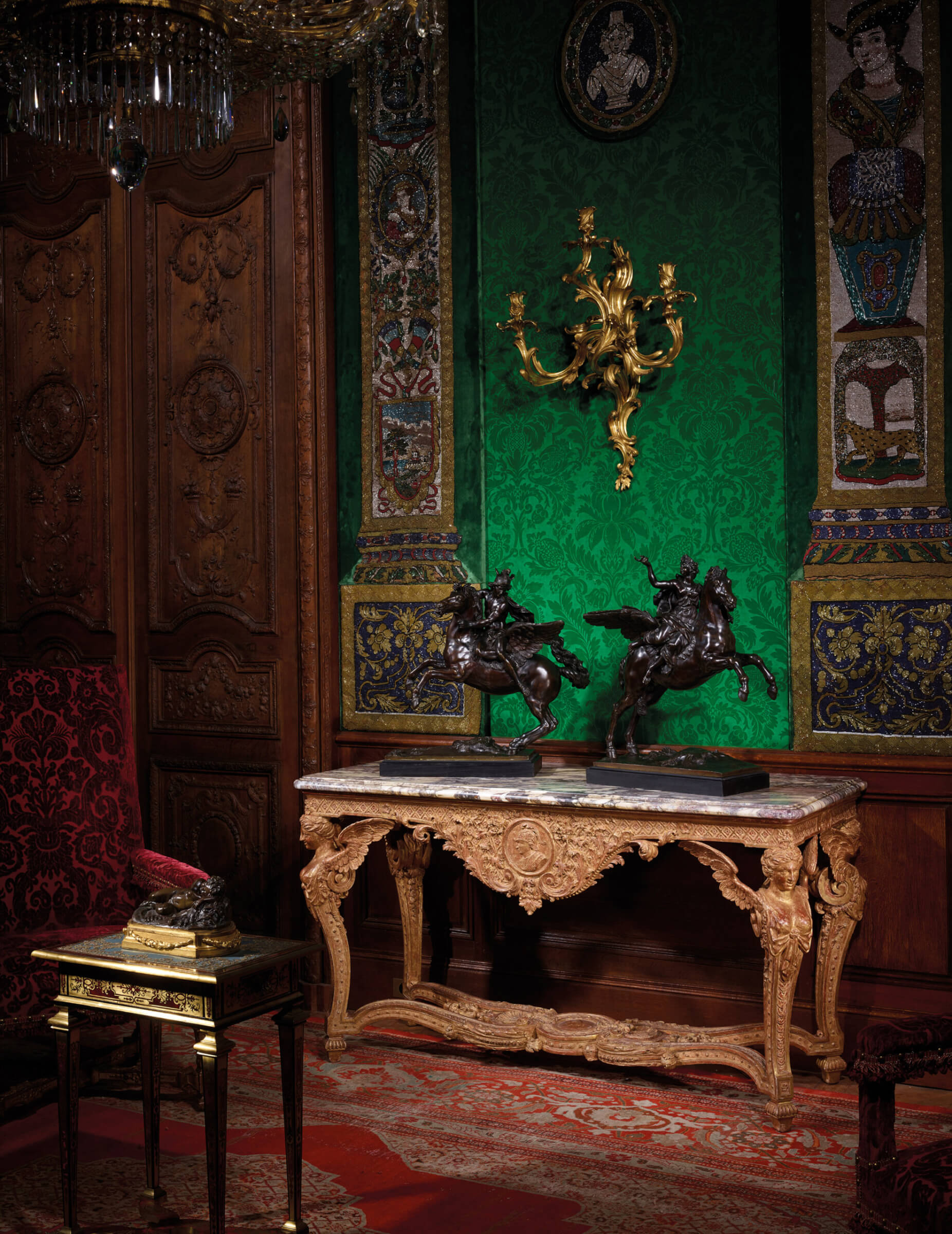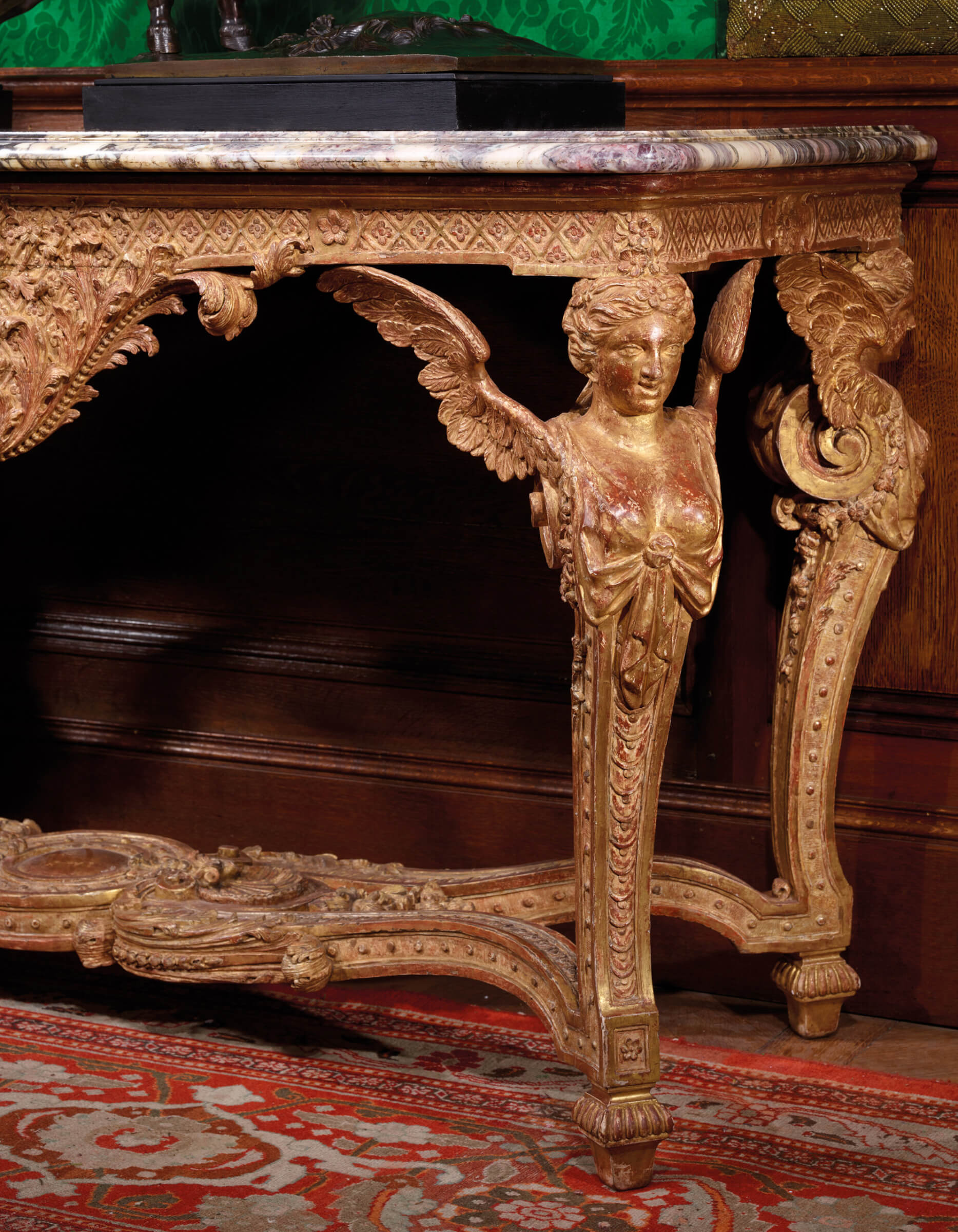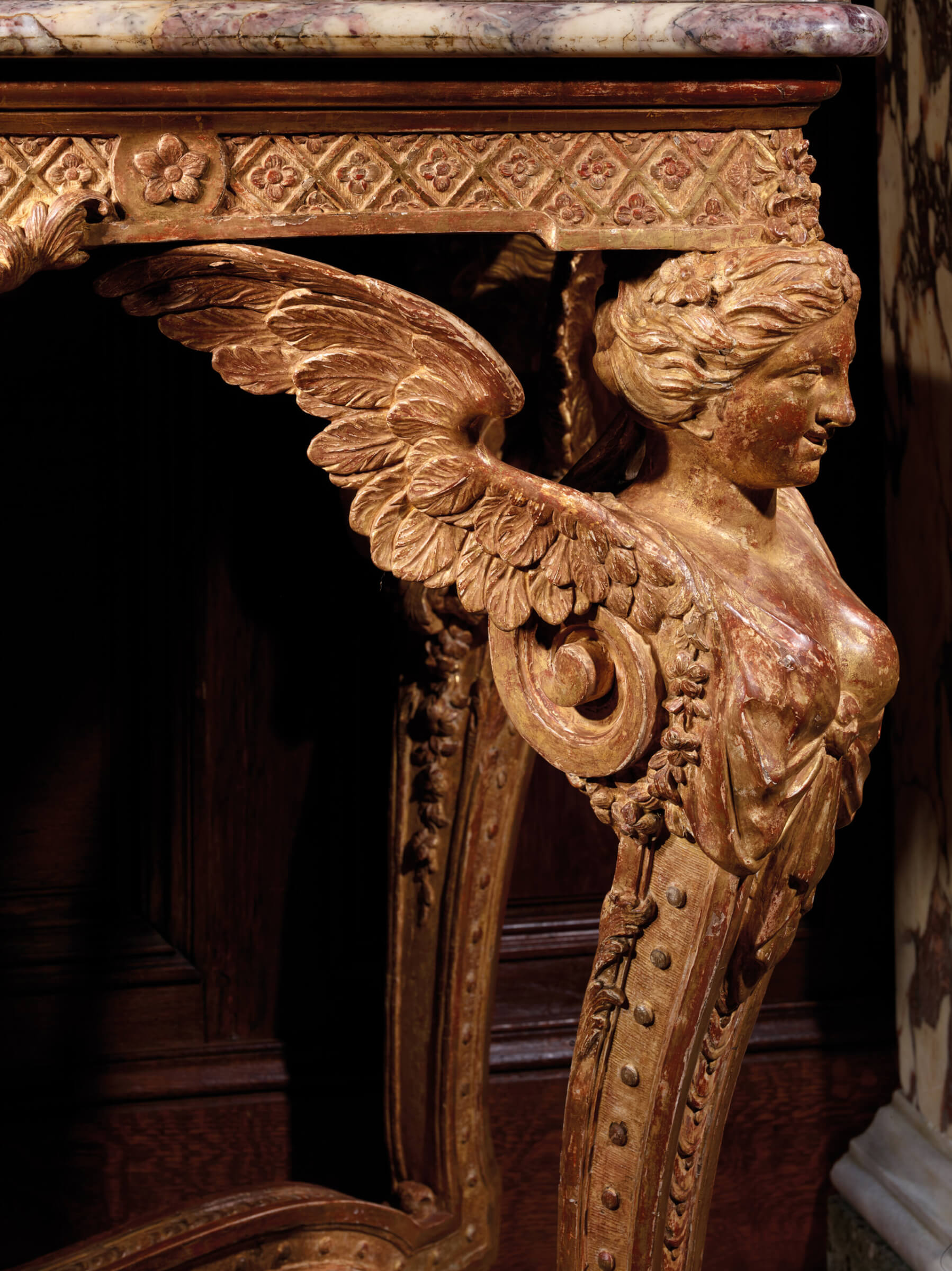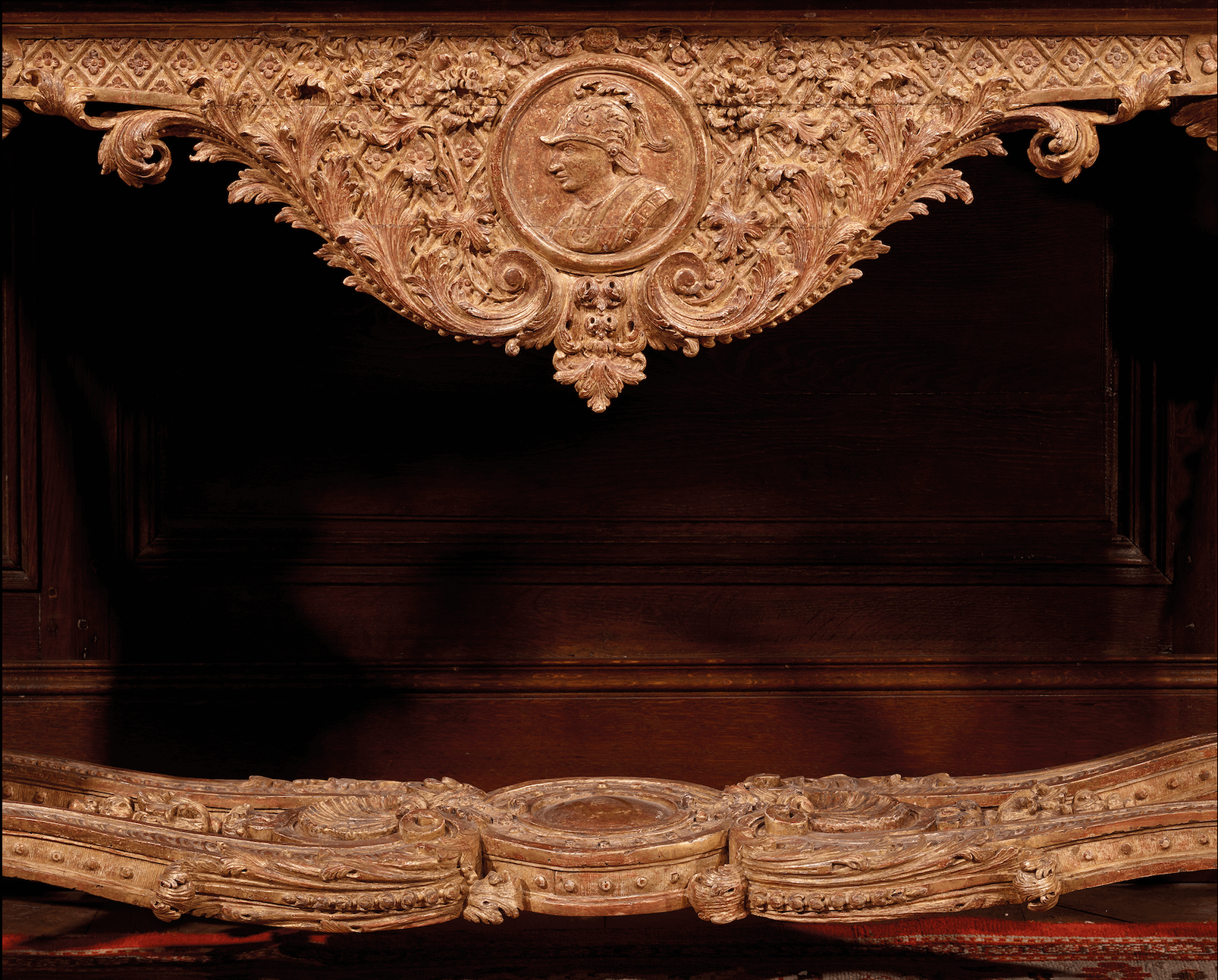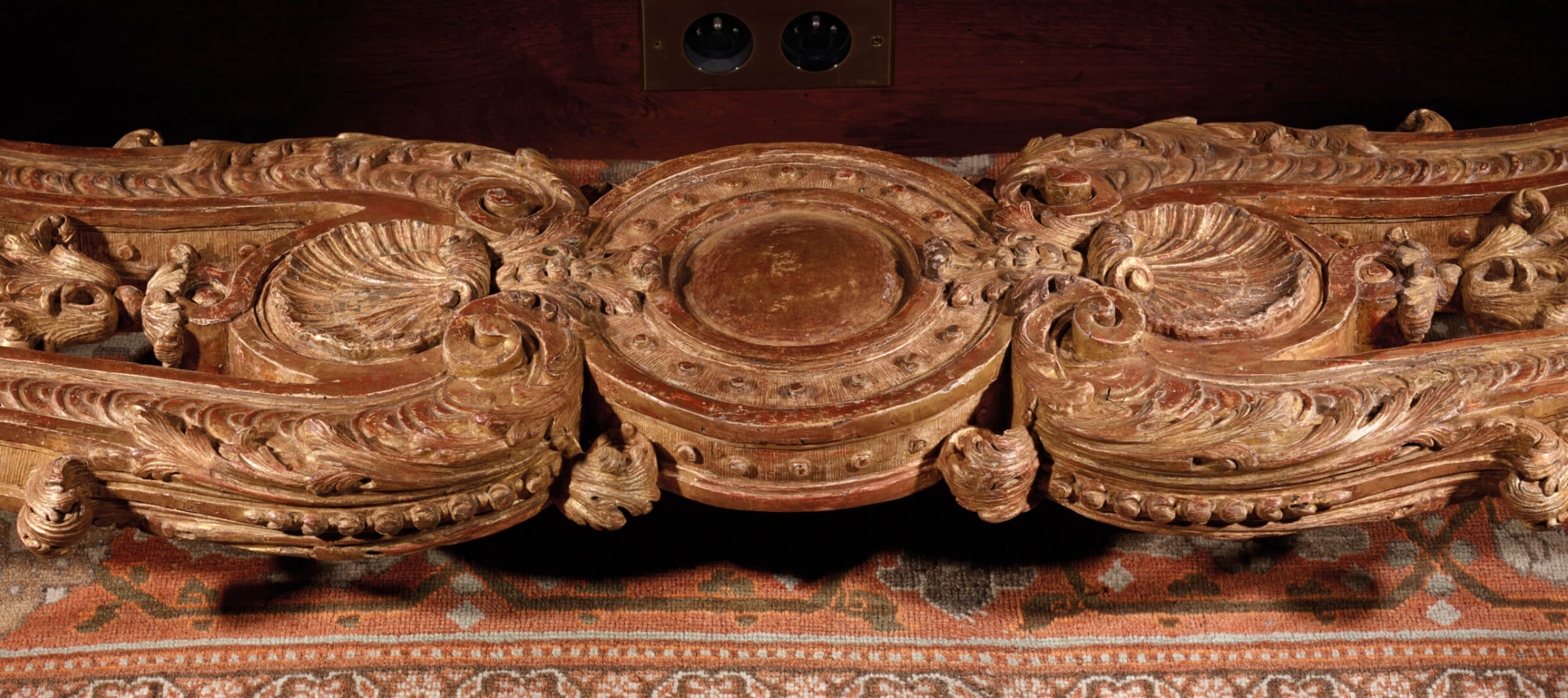

Moulded, carved and gilded walnut; Breche Violette marble.
H. 86 cm. (34 in.); W. 155 cm. (61 in.); D. 63.5 cm. (25 in.).
PROVENANCE: collection of Pierre-Louis-Bernard d’Harcourt (1842-1914), 5th Marquis of Harcourt-Olonde, and his wife, born Marguerite de Gontaut-Biron, (1850-1953), at the Château de Saint-Eusoge, Rogny-les-Sept-Écluses (Yonne, France); collection of their son, Etienne d’Harcourt (1884-1970), 6th Marquis of Harcourt-Olonde, at the Château de Saint-Eusoge; collection of his son Amaury d’Harcourt (1925-2018), Viscount of Harcourt, at the Château de Saint-Eusoge; collection of his daughter Diane d’Harcourt (born 1954), at the Château de Plainval, near Saint-Just-en-Chaussée (Oise, France).
COMPARATIVE LITERATURE: Bruno Pons, De Paris à Versailles, 1699-1736, Les sculpteurs ornemanistes parisiens et l’art décoratif des Bâtiments du roi, Strasbourg, 1986, p. 174 and note 517, fig. nos 497 and 498.
The console, from the collection of the Marquis of Harcourt-Olonde, is derived, without much modification, from a table engraved circa 1700 by Pierre Lepautre (c. 1652-1716), architect, engraver and ornamentalist, appointed in 1699 draughtsman of the Bâtiments du Roi. It is characterised by a large central medallion, ribboned and forming a projection, adorned with the profile of a male bust in the ‘antique style’, in the case at hand facing to the left and helmeted. This console belongs to a very small corpus of similar consoles, dated to the end of the reign of Louis XIV or to the very beginning of the Régence period, circa 1700-1720. Despite some variations in the detail of their sculptural repertoires, all these consoles unquestionably derive from Lepautre’s model and show that it enjoyed undeniable success for more than twenty years, a success that is highly revealing of the attachment of certain ornamentalists, cabinet-makers and sculptors of the Régence period to tried and tested approaches dating back to the 1700s, as opposed to other, more ‘avant-garde’ styles developing at the same time and foreshadowing the ‘rocaille’ period to come.
The model also became widely known abroad in the decade 1720-1730, particularly at the Francophile court of Bavaria. The Rijksmuseum in Amsterdam holds a large (176 cm) gilded limewood console from the collection of Dr. Fritz Mannheimer (1890-1939) before 1933, which was executed in Munich and dated circa 1725-1730. It is a true interpretation of our model, attributed to the workshop of Johann Adam Pichler (c. 1716/1717-1761), probably after a design by Joseph Effner (1687-1745). Our console comes from the collection of the Marquis of Harcourt-Olonde, one of the most powerful and illustrious Houses of France, of feudal extraction, originating in Normandy, and having produced a number of statesmen, governors, marshals of France, ambassadors and prelates.
